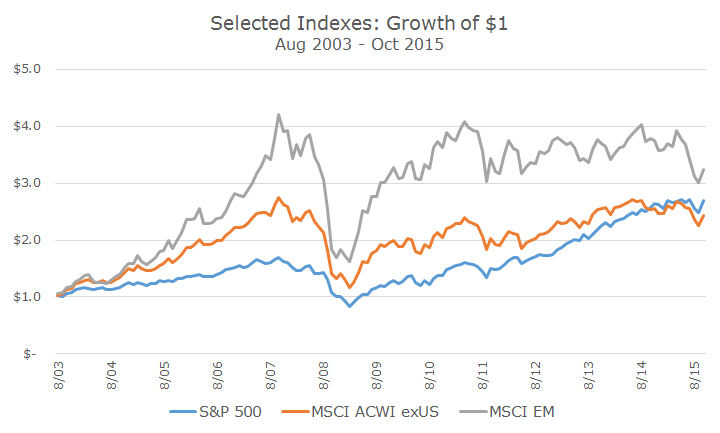It looks like you're new here. If you want to get involved, click one of these buttons!
But Schwab charges a ridiculous $75.95 for purchasing TF funds whereas Fido charges $49.95, also with no fee for redemptions.At least Schwab now charges the fee only on the front end. If you wanted to take some profits, rebalance, etc. the $49.95 they used to charge on the redemption end (for any amount) was steep.
And I don't like plunking down $100k all at once for any fund...not a good market timer.
Looking at the data Zorilla included in the table at the link I posted, it appears that data runs through 11/13. But, in checking Zorilla's data, it indicates -- as an example -- that the share price change for BNDX is at -0.32% through closing on 11/13. But, in checking at M*, that site indicates the total return on BNDX is at 0.88% through 11/13. So, there is a difference of 1.20% related to reinvesting the dividends for BNDX. Zorilla's returns appear to only reflect changes in share prices. So, they understate the total returns through 11/13 (assuming dividends are reinvested in the same ETFs with no rebalancing).I invested a third of my IRA in the Schwab intelligent portfolio at about a 60/40 mix. I invested in June of this year. I input the portfolio into M*. As of today the Schwab portfolio YTD is down -2.85%. Not sure when the data you show is from, likely end of 3rd quarter.


© 2015 Mutual Fund Observer. All rights reserved.
© 2015 Mutual Fund Observer. All rights reserved. Powered by Vanilla